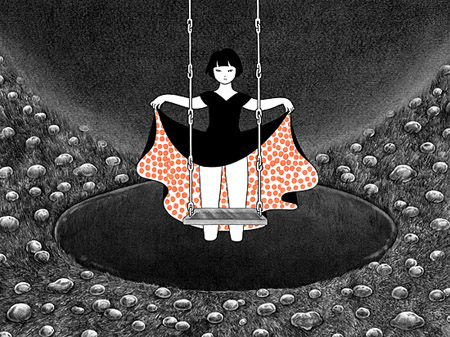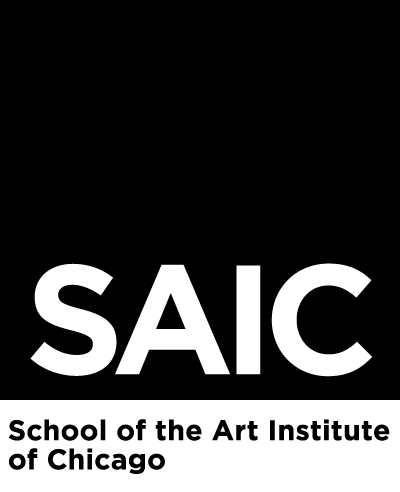NEW NIPPON: CONTEMPORARY FILM & VIDEO FROM JAPAN
Posted by | Conversations at the Edge | Posted on | December 1, 2009
Thursday, December 3, 6pm
In a nation that is geographically isolated yet always looking outward, rooted in ancient tradition while existing at the forefront of technological innovation, the complexion of contemporary Japanese moving image is like no other. This evening’s program brings together work by some of Japan’s brightest emerging film and video artists. From digital filmmaking and award-winning shorts to works that draw from the country’s rich experimental film and hand-drawn animation traditions—“flip book” paintings, diary films, and time-based collaborations between avant-garde artists and musicians—”New Nippon” explores the inventive and otherworldly work of Tomonari Nishikawa, Wada Atsushi, Maya Yonesho, Hiroshi Kondo, Stom Sogo, and many others. Curated by SAIC graduate student Kelly Shindler. 2002–09, various artists, Japan, multiple formats, ca. 80 min.
Program
Maya YONESHO, Daumenreise 6: Kyoto Mix (2008, Beta SP, 5 mins)
With Ken Shinno, Maya Tsujimura, Keiji Aiuchi, Jerome Boulbes. Music: Akira Morita
A collaboration between the artist and four of her students, this snapshot of the famous city of Kyoto was first composed as hundreds of still images and then transformed into an animated flip book. “Daumenreise is an animation workshop project with the same method of “Wiener Wuast”—shooting small drawings in our hands in the real view, over the world with students, children and friends. Films have been made in Taiwan, Norway, Croatia, Israel, Kyoto, and Poland since 2007.” (MY)
Tomonari NISHIKAWA, Sketch Films #3-5 (2006-7, Super-8 shown on mini-DV, silent, 3 mins each)
#3: “It starts with series of a pair of frames, a blurred image by camera movement followed by its steady image. Later, it shows my challenge on creating apparent depth on the screen.”
#4: “My first Sketch Film in color, trying to see the mingle of colors through projector. I used Kodachrome, and sent it to Dwayne Photo to process.”
#5: Nominated for a Tiger Award at the 2008 International Film Festival Rotterdam. “All images had been shot in Marin, California, when I had a studio space at the Headlands Center for the Arts for a year. The footage shows the nature in the area, as well as historic buildings, including batteries and the Nike Missile Site.” (TN)
Naoyuki TSUJI, Zephyr (2009, 16mm on DVD, 6 mins)
This newest work by Tsuji, who was featured in CATE’s Spring 2009 season, continues the artist’s fascination with the wind and family. “Zephyr refers to the Greek god of the west wind. Zephyr in Tsuji’s work comes to a baby and takes the baby into inside of the sun. What kind of experience is waiting for the baby?” (Tomio Koyama Gallery, Kyoto)
Atsushi WADA, Well That’s Glasses (2007, DVCam, 5:40 mins)
Hand-drawn cell animation about the veracity of vision, illustrating what happens when work, sleep, chemistry, and the human, animal, and dream worlds collide. Wada’s magic realist approach deftly incorporates repetition and a sparse color palette to illustrate the most curious of stories. (KS)
Joji KOYAMA, From Nose to Mouth (2006, 16mm and video on Beta SP, 18.5 mins)
Commissioned by Animate Projects, UK. “A solitary figure emerges out of seclusion to learn an ice-skating dance sequence. Set in a disorientating arena of shifting boundaries, structures and languages, the lessons are not going well… From Nose to Mouth portrays the unsuccessful efforts of a character trying to make sense of the demands and tasks of a strangely disjointed and fragmented world. Lost in the gaps and ‘in-betweens,’ the film is a kind of homage to awkwardness and inexactitude.” (JK)
Hiroshi KONDO, Live Material 001 and Live Material 002 (2008, DVCam, 1 min each)
Short “documentations” of live VJ performances by this Sapporo-born video artist. Composed with contemporary technologies (AfterEffects and Inferno), both shorts simulate the dated technicolor palate and tone of 90s rave culture. (KS)
Akino KONDOH, Ladybirds’ Requiem (2006, DVD, 6 mins)
Henry Darger meets ladies’ manga in this innovative video by young multimedia artist Kondoh. “Recently, [Kondoh] has been drawing on a special surface treated with gesso so that the pencil lines appear indented from pressure, like soft embroidery. In [Ladybirds’ Requiem], it is as if the world of her drawings is sewn piece by piece into the sequence of images on screen. The drawings of little girls will continue hatching without end, and the pursuit of images will result in a proliferation of variety, until these memories leave the imprint of their stitches throughout the world.” (Sayaka Nishiki)
Ryusuke ITO, Plate #43-44 (The Forked Tongues) (2008, 16mm, 4 mins) 2008
“I make “plates” consisting of film strips cut; it is a kind of transparent collage on a small plastic board. I put this on raw stock and contact print several times (usually 20 times). Most sounds come from the results of the optical-sound-head of a projector reading the images on the film. When the soundtrack of the original stock occasionally gets in a “right” place, we hear segments of some music or human voice. My source material is [found] footage gathered [from my] travels. For this film, I use some images of Czech film, which I got there. I bought tons of abandoned films at a small camera store in Prague.” (RI) Ito, who teaches at the Hokkaido University of Education in Sapporo, holds an MFA in Filmmaking (1992) from the School of the Art Institute of Chicago.
Stom SOGO, Try (2002, mini-DV, 9 mins)
A loop of two lovers is slowed to quasi-stillness as the dub soundtrack crackles with static and noise, which is central to much of the artist’s work. “Try was originally shot on Super-8mm film and then re-shot on video. The idea was to have the image of young kids kissing forever. Ecstasy here is so wasted.” (SS) “The films of Stom Sogo are incantatory and self-combustible. An erratic master of low tech do-it-yourself sortilege, he puts his works through seemingly perpetual remakes.” (Mark McElhatten)
Takashi MAKINO, Still in Cosmos (2009, 35mm on HDCam, 19 mins). Music: Jim O’Rourke
“A product purposed of an installation project held at Tokyo’s Metropolitan Museum of Photography. Recomposed as completed film work in 2009. This film visually demonstrates the fact that human has ability to change Chaos [into] Cosmos. A transcendent Free Jazz soundtrack is presented by band Osorezan, commanded by Jim O’Rourke. Now images and sound break the wall of the universe and plunge in the new world.” (TM)
TRT: 80 mins.

